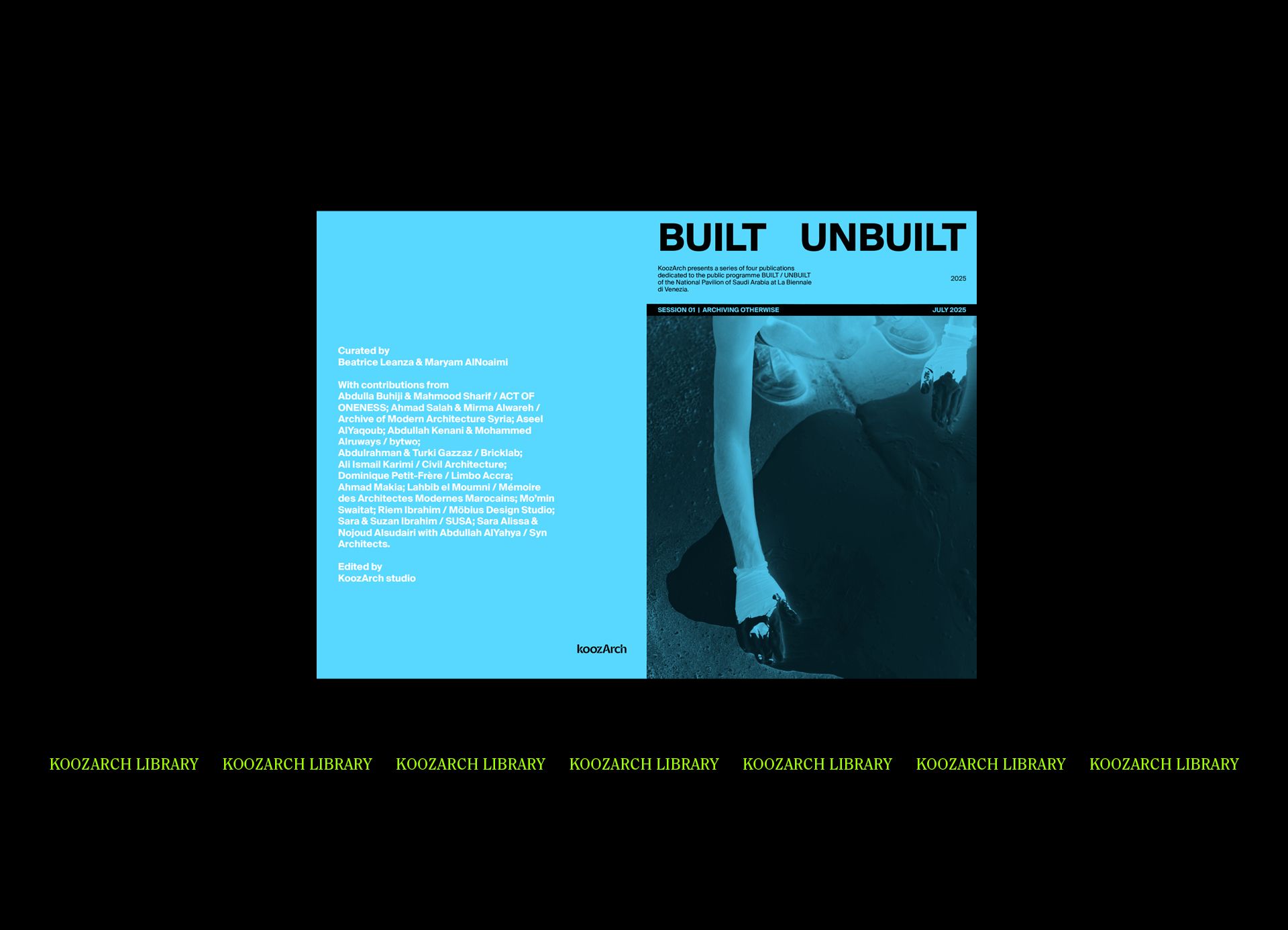Representing The Irwin S. Chanin School of Architecture Archive of The Cooper Union, the space allocated to the voice of the institution has been given over to that of a student. Sarah Saad’s undergraduate thesis project, New Masqat, has been documented by the school’s Architecture Archive and is part of the Student Work Collection. Her project elevates the participation of users and gives room to a self-directed process of collective design, standing as a speculative example of fair play and enabling marginalised communities in Egypt to determine their own futures.
This essay is part of Issue #2 “Fair Play”, a series curated by KoozArch.
For the discipline of architecture to start interrogating power, it is essential that we redefine the architectural understanding of the margins. Just as literature's margins provide space for expression, printmaking values intermediate stages that contribute to the final work. By redefining these margins — to reflect the significance of literature and printmaking — we can articulate differences and promote individual expression.
For the discipline of architecture to start interrogating power, it is essential that we redefine the architectural understanding of the margins.

Sarah Saad, New Masqat, 2022-23 undergraduate thesis (documented by the Architecture Archive and part of the Student Work Collection).
If our understanding and representation of things shape the way that we build them, it becomes crucial to push the current boundaries of conventional architectural representation. By embracing the concept of margins as dynamic, dialogical spaces rather than undesirable peripheries, architecture can begin to address power imbalances and engage in more inclusive, empowering, and communally conscious practices. Personally, I have found that through the representational potentials of printmaking, we can begin to address these concerns.
By embracing the concept of margins as dynamic, dialogical spaces rather than undesirable peripheries, architecture can begin to address power imbalances and engage in more inclusive, empowering, and communally conscious practices.
In an attempt to address the housing crisis in Egypt and design collaboratively with marginal communities, I created a series of stamp sets that work together to communicate a growing idea of a place. These stamps provide ‘marginalised’ communities with alternative ways of expressing their agency — for instance, what they want their future to look like — and communicating their needs. The stamps represent a generational building practice innate to this region; they are open and unfinished, always attracting interrogation and dialogue. They range in scale, from depictions of the city to the interior of a home to the space of the masqat. The stamps enable a design process that transforms the imaginary desires of a community into a process of creation.
Stamping allows the community to come together and transform their ideas — which may have been thought of as impossible — into ideas that are imaginary.
The power in the act of communally drawing these spaces is that it not only makes them worthy of being drawn but also gives them the potential to exist. Stamping allows the community to come together and transform their ideas — which may have been thought of as impossible — into ideas that are imaginary. This essential transformation comes with an acknowledgment: that an architecture could exist that addresses the needs of these communities. This process of stamping and restamping is essential to transforming the imaginary into a process, and a series of layers. The stamping process embodies complexity and thus the need to delegate and organise. It requires that communities learn to more closely observe their surroundings: their material resources, their relations to one another, and their relationship to the environment. The limitations of the stamps parallels the potential limitation of resources, forcing pragmatic imagination. What can we do with what we have? What do we value so highly that it warrants carving another stamp?
This thesis calls for an architecture of the margins wherein communities are prioritised, and their knowledge and literacies are embraced and seen as sources of knowledge.
Text by Sarah Saad.
Bio
The mission of The Irwin S. Chanin School of Architecture Archive is to record the School of Architecture’s pedagogy by documenting student work, to provide students with resources that augment and enhance their architectural education, and to produce informative design exhibitions, publications, events, and digital collections that enrich The Cooper Union as well as audiences in New York City and beyond. In 1970, John Hejduk and Roger Canon AR’70 established a method of documenting student work for Education of an Architect: A Point of View, a publication and corresponding exhibition at the Museum of Modern Art in 1971. Supported by a recommendation of the 1980 National Architectural Accrediting Board (NAAB) Visiting Team, the Archive was established in 1983 and officially became a department of the School of Architecture in 1991. Kim Shkapich A'80 was its first director and Steven Hillyer AR’90 is its current director.





